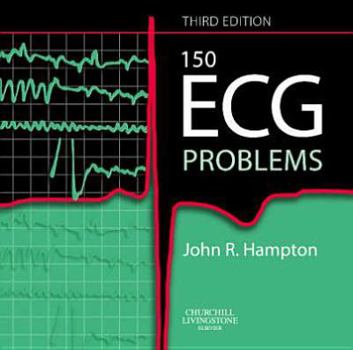150 ECG Problems
Select Format
Select Condition 
Book Overview
Learning about ECG interpretation from books such as 'The ECG Made Easy' or 'The ECG in Practice' is fine so far as it goes, but it never goes far enough. As with most of medicine there is no substitute for experience, and to make the best use of the ECG there is no substitute for reviewing large numbers of them, seeing them in the context of the patient from who they were recorded, learning to appreciate the variations both of normality and of the patterns associated with different diseases, and thinking about how the ECG can help patient management.
Although no book can substitute for practical experience, 150 ECG Problems goes a stage nearer the clinical world than books that simply aim to teach ECG interpretation. It presents 150 clinical problems in the shape of simple case histories, together with the relevant ECG. It invites the reader to interpret the ECG in the light of the clinical evidence provided, and to decide on a course of action before looking at the answer. Having seen the answers, the reader may feel the need for more information so each one is cross-referenced to the ECG Made Easy or The ECG in Practice.
The unique page size allows presentation of all 12-lead ECGs across a single page for clarity.Several of the cases incorporate chest X-rays and coronary angiograms illustrating the appearances that are associated with various cardiac conditions.
All the cases are graded in difficulty and are cross-referenced to the new editions of ECG Made Easy and ECG in Practice for further information.
For this Fourth Edition over 30 new ECGs have been included, mainly to provide clearer examples, though the book deliberately retains some technically poor records to maintain a 'real-world' perspective.





